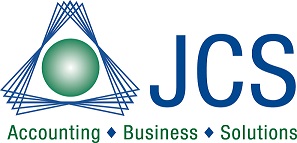Sage 50 Month End Close Checklist And Support
 Sage 50 month end close checklist
Sage 50 month end close checklist
Advise for Sage Software Users
Reach out Today for Sage 50 software promotions! Give us a call – send us an email – schedule a Free Demo!
Month End Close Checklist – Preparing your monthly reports and reconciling accounts sounds like a big job, but Sage makes it easy. This basic checklist ensures nothing is forgotten during the closing process.
“Dear customer
It has been our pleasure to work with you over many years. Thank you for trusting us and helping us grow into a huge success. We look forward too many more years of working with you and your team. Please do not hesitate to reach out to us and let us know how we may help you.”
Sage 50 month end close checklist request is located AT THE BOTTOM of the page
Sage 50 Month End Close Checklist
Sage 50 Month End Close Checklist Tips and Tricks – Sage 50 Accounting is date sensitive and has the option to record any transaction with a date in any of the 24 open periods as long as you have security permissions. Transaction dates determine which accounting period the transaction is included in. There in no hard close for Sage 50 at the end of the month only at the end of the year for the first 12 periods.
When you attempt and are prevented from recording a transaction using a date prior to the start date of the first available period it means the period has been closed and cannot be reopened. If a transaction date is required after the ending date of the last open period the close year process must be run before future dates are allowed to be used. Additional steps above those followed for a regular month end are usually required prior to running the year end close utility. For Sage 50 Support Assistance:
- Sage Peachtree Support
- Peachtree Support
- Sage 50 Support
- Support Legacy Versions
- Sage 50cloud Support
Sage 50 month end checklist 13 suggested steps
Caution – it is recommended you record all necessary transactions and close the year end after the first 12 period tax return has been filed. The year end close process is typically performed as you draw close to the end of the 24th period. Transactions Include:
- Client invoices
- Customer cash receipts
- Vendor invoices
- Accounts Payable Checks
- Inventory adjustments
- Assembly builds
- Time and Expense Slips
- Payroll checks
- Journal entries
- Transactions associated to Jobs
- Closing Purchase Orders
- Closed Sales Orders
- Clearing unneeded Quotes
These are basic steps outlining tasks to be completed to close your month end in Sage 50. Start with our check list of the steps and detailed information for each step. Lastly review the frequently asked questions. There may be more steps you will need to consider and include such as Work in Process, Customer and Vendor Deposits, Deferred revenue, retainage, asset depreciation and accrued expenses and more.
Month End Checklist
You can modify the JCS excel based Sage 50 Month end check list and add items you need or remove items you do not need. This will result in a list of items your business needs to take care of each month. Use this list to confirm you are taking care of necessary business tasks and may be shared with managers and owners. As time allows, we will post additional information on these individual topics.
A very important topic is backups of your Sage 50 installation, company data files, forms and attachments. Typically, this involves a complete or full backup of your server performed periodically. Backup your Sage 50 company files, 3rd party add-ons and custom reports. If you are hosted in the cloud ask your provider for a valid usable copy of all mission critical company data files. This is a critical step if you are about to close a month.
Backups
Sage 50 backups are easy. From the task menu within Sage50 select File then select Backup. In the next window select to include your company name in the Sage 50 backup file name. In addition, if you are using attachments you should include those as well. Select the backup bar and in the last window select the secure path name where the backup file for Sage 50 will be placed on our workstation or server. This backup file can only be read using the Sage 50 software WinZip will not decompress this into a usable file. Select the path location the .ptb file will be placed in. If you are using Sage Business Intelligence Reporting, this is a good time to also backup any custom BI reports from within the Report Manager module.
Step 1. Month End Reports
These are the recommended reports that should be produced, printed to a PDF repository and reviewed to make sure all the subsidiary report totals agree with the balances found in the balance sheet statement accounts or income statement. Make sure any reports with sensitive data are placed in a highly secure location.
One consideration is if you are using more than one system to manage the operations of the business you may be making journal entries into the general ledger to record the activity. If so, the reports listed below may be produced from Sage 50 or from the 3rd party add on software system. In addition, there could be reports maintained manually in excel that should be incorporated into your month end checklist, quarter end check list and year end checklist. The reports listed below should all be generated using the same period end date regardless of where they are generated.
Sage 50 Financial Statements:
- Trial balance
- Balance Sheet
- Income statement
Sage 50 Subsidiary reports:
- Bank reconciliation (after the bank reconciliation has been completed)
- Accounts receivable aging detail total = the Balance Sheet Accounts Receivable GL account
- Vendor Accounts payable aging detail total = the Balance Sheet Accounts Payable GL account
- Inventory valuation total = the Balance Sheet Inventory account
- Payroll Year to date earnings report look at gross wages. If the fiscal year is calendar = the total gross wages expense account found on the income statement
- There are a few other available reports that you may want to include on your checklist
Step 2. Reconciling reports to the general ledger monthly
The Sage 50 general ledger trail balance is one of the key reports to be used during the reconciliation process. Optionally you can use the Balance Sheet and / or the Profit and loss. It is really easy. You take each report mentioned from the subsidiary, look at the totals and compare them against the period ending balance on the financials to make sure the amounts are the same.
A basic review of the health of our accounting is simple to do
Before you begin to close your Sage 50 Month you should audit the reports you have printed and/or saved to PDF in the previous review step. You may also want to review the Internal Accounting Review Report at this point to look for possible issues requiring review. Once the review is complete and all the Sage 50 subsidiary reports reconcile to your financial statement balances then proceed to the next step which is the actual close.
Step 3. How to I perform the Sage 50 close?
Sage 50 Month end close – If you provide financial reports to an external Accountant or CPA at the end of each year to use as the basis of your tax return request a list of adjustments they have made before filing the company tax returns. These changes should be recorded as journal entries into your Sage 50 accounting software so your Sage 50 financial balances agree to the balances submitted on your tax returns. Once this is completed the Sage 50 month end close is easy.
To close your Sage 50 and move to the next accounting period simply select the Period bar in the left hand upper corner and change to the next period or you can change the period by selecting task then system and change accounting period off the upper task bar. You must have the appropriate user security settings to access this function.
Step 4. How do I know if my financials are correct?
The only way to know is to reconcile the financial statements to the subsidiary information. You may need more reports or stepson your list than those mentioned in this post.
Step 5. What if my Sage 50 balances are not correct?
You should start by calculating the exact amount you are out of balance. Look at the detail to see if it is a single transaction or perhaps a rounding error.
Step 6. Monthly reports for Accountant or CPA
Depending on the frequency of financial reviews you may choose to provide copies of some or of all the reports you generated or more than what is mentioned in this post. Normally the accountant or CPA will provide guidance as to which reports they will need. Having your subsidiary ledgers reconcile to the financial statements on a monthly basis will save a lot of steps. When this is not performed you could end up having large periods of time where your system is not in balance. By measuring your financial system balances each month or on a more frequent basis correcting records not properly recorded will be minimal.
Step 7. How do I backup my Sage 50 data files?
To manually backup your Sage 50 company data files select Sage 50 and from the task menu select File then select Backup. In the next window select to include your company name in the Sage 50 backup file name. In addition, if you are using attachments you should include those as well. Select the backup bar and in the last window select the secure path name where the backup file for Sage 50 will be placed on our workstation or server. If you are using a hosting service discuss how they will also provide backup services.
Online Backups
Optional Automated Backups can also be setup – Sage 50 does not need to be open for the automatic backups to complete successfully. It is recommended to run the backups from the server for the following reason Windows must be logged in on the computer that created the backup configuration file. All users must be logged out or you must enable the Log Out Users prior to running backup. When users are signed into the Sage 50 company at the scheduled backup time and this option is not enabled the backup will not proceed.
It is recommended to save the backups to a secured specific folder set up for backup files. Periodically backup this folder backed an off-site location or external drive to prevent data loss should hardware failure or a natural disaster occur. If you want to view the log of automatic backups you can browse to the folder where the backup configuration file (.PTC) was saved. Then you will need to open the .txt file with the same name. It is imperative the any automatic backups be monitored to insure that the backup is taking place.
Sage 50 Month end Frequently Asked Questions
What are the potential problems during the close for Sage 50 Accounting?
This process really needs to be completed each month.
It is not fun to close the monthly books in Sage 50 Accounting can’t I just skip this step?
Remember that while the close process can seem routine, it’s essential to the business.
How long does the Sage 50 month end close normally take?
Some of the considerations are how large your company data files are, how fast your computer is and if you manage your time efficiently and are well organized the month end close for Sage 50 may go very quickly.
For a free demo of Sage 50 Accounting give us a call 800-475-1047

Request month end close checklist - Bottom of the page
Accounting Software Month End Close Checklist
Do More Sage 50 Quarter End Close Checklist Today
Be More Sage 50 Year End Close Checklist Be Impactful

Sage Software Sales
- New Users
- Upgrades
- Add-ons

Sage Software Consultant
- Certified consultant
- Advanced Reporting
- Implementation

Sage Software Support
- Remote
- Onsite
- Integrations
Learn how the right Sage Software Solution can help your business get to the next level
Give us a call 800-475-1047 Accounting Business Solutions by JCS offers
